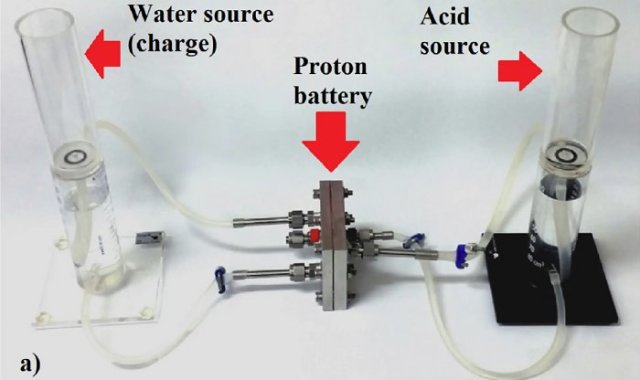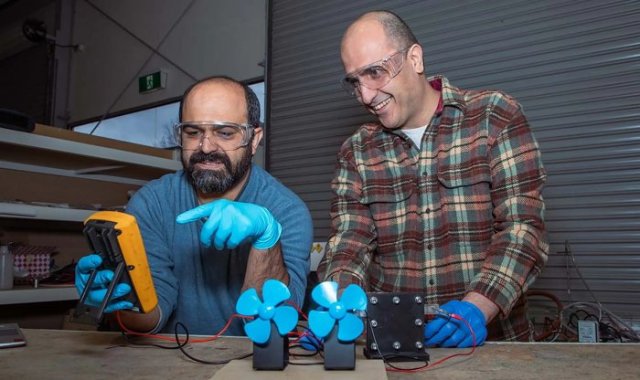
Proton battery
Researchers from Melbourne's Royal University of Technology have reported a new success in the development of proton batteries. They managed to triple the energy density of the device, now it reaches 245 Wh/kg. For comparison, commercial lithium-ion batteries have this parameter of about 260 Wh/kg, while the new technology has a number of advantages over them.
A proton battery works like a hydrogen fuel cell, but vice versa. Here, water enters the entrance as a "fuel", which is divided into oxygen and hydrogen protons. They are not converted into a dangerous gaseous form, but accumulate inside an electrode made of a porous material. Initially, they were served by activated carbon, which was additionally impregnated with acid. This design allows you to store energy in the form of hydrogen ions with minimal risk. Expensive and rare materials, such as lithium, are not used here, all components of the proton battery are completely recyclable. The level of energy loss is less than that of other hydrogen energy systems, and the calculated efficiency reaches 75%. The disadvantage of this battery is exactly one – it does not exist yet, even in the form of a prototype. Scientists have reproduced all the stages of battery operation in the laboratory and repeatedly optimized the design, but they have not yet been able to assemble a whole product. More precisely, in the current format, the battery is too bulky and complex, and the energy density drops sharply due to an increase in the weight of the structure. However, engineers from Eldor Corporation have already joined in solving this problem, who intend to design a working prototype with a capacity of up to a megawatt.

Proton battery
Alexander Martynenko
